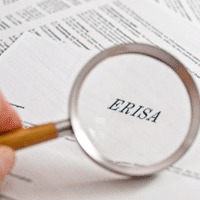Association Health Plans Get Boost From Labor Department
Reposted from the Labor & Employment Law Navigator Blog – Click Here to Subscribe
The Employee Benefits Security Administration of the Department of Labor has just released for public consideration, and published for comment, a significant new interpretation of the term “employer” under ERISA. Under the proposal, small businesses and sole proprietors would have more freedom to band together to provide health coverage for employees in what are referred to as “Small Business Health Plans” or “Association Health Plans”. The proposal would allow employers to form a Small Business Health Plan on the basis of geography or industry. A plan could serve employers in a state, city, county, or a multi-state metro area, or it could serve all the businesses in a particular industry nationwide.
Up until now, most association arrangements, such as Multiple Employer Welfare Arrangements (MEWAs), have been considered as a collection of individual employer plans, rather than a single plan. This meant that the plans were treated as being in the small employer group market or the large employer group market based on the number of participants in each employer’s workforce. The effect of the new interpretation would be to put all the employer populations together, so they would all be in (most commonly) either the large group market or, if the association decides to be self-insured, in the self-insured market.
In addition, the new interpretation would permit sole proprietors and partners to be treated as both employers, for certain purposes, and employees for the purpose of being able to participate in the Association Health Plan. In the past, “employee-less” groups were treated as not covered by ERISA. Now, entrepreneurs with zero employees can obtain coverage through the association, and business owners who are active in the business can obtain coverage alongside their employees.
A third major part of the new interpretation is a non-discrimination requirement. As currently envisioned, an association cannot discriminate against employers based upon any health characteristic of the employer’s workforce. Nor can the plan discriminate within an employer group based on health characteristics of any participant. However, the association can establish different rates for “non-health” characteristics, such as bargaining unit membership, beneficiary vs. participant status, retiree vs active status, full- vs. part-time status, and occupation. The specifics of what associations can do to “police” member employer conduct and how the association can encourage wellness initiatives will require additional interpretation.
The fourth major change from current interpretative guidance is that associations may be formed specifically for the purpose of having a benefit plan. Until now, an association had to have had a reason to exist apart from providing benefits, such as promoting the industry in which its members operate. The limitation is now that the association may be formed specifically to offer health plans if it offers them (1) within a state or (2) within a metropolitan area, even if the metropolitan area covers more than one state. The definition of the metropolitan area is one of the points as to which the DOL is seeking input.
As with all things ERISA, the new interpretation is complex and raises significant issues for small- and medium-sized employers who are not already self-insured. Interested parties now have 60 days to submit comments. Because the initiative for the new interpretation was an Executive Order, it is anticipated that the time from the close of comments to issuance of a final rule will be short. Employers would be well-advised to follow developments closely, submitting comments where appropriate and encouraging any associations to which they belong to weigh in.


